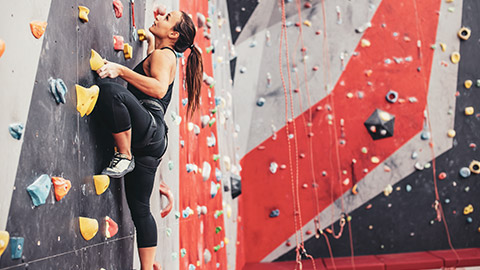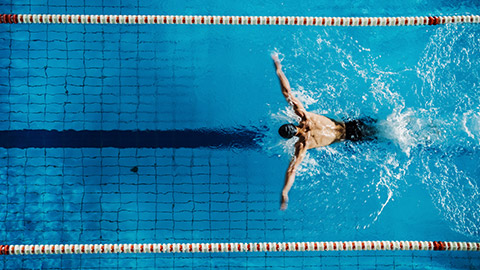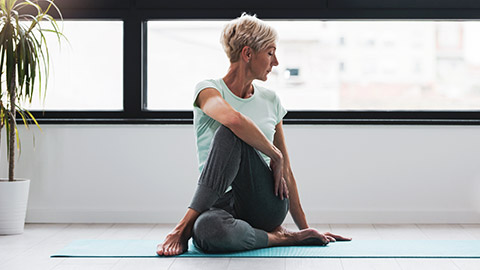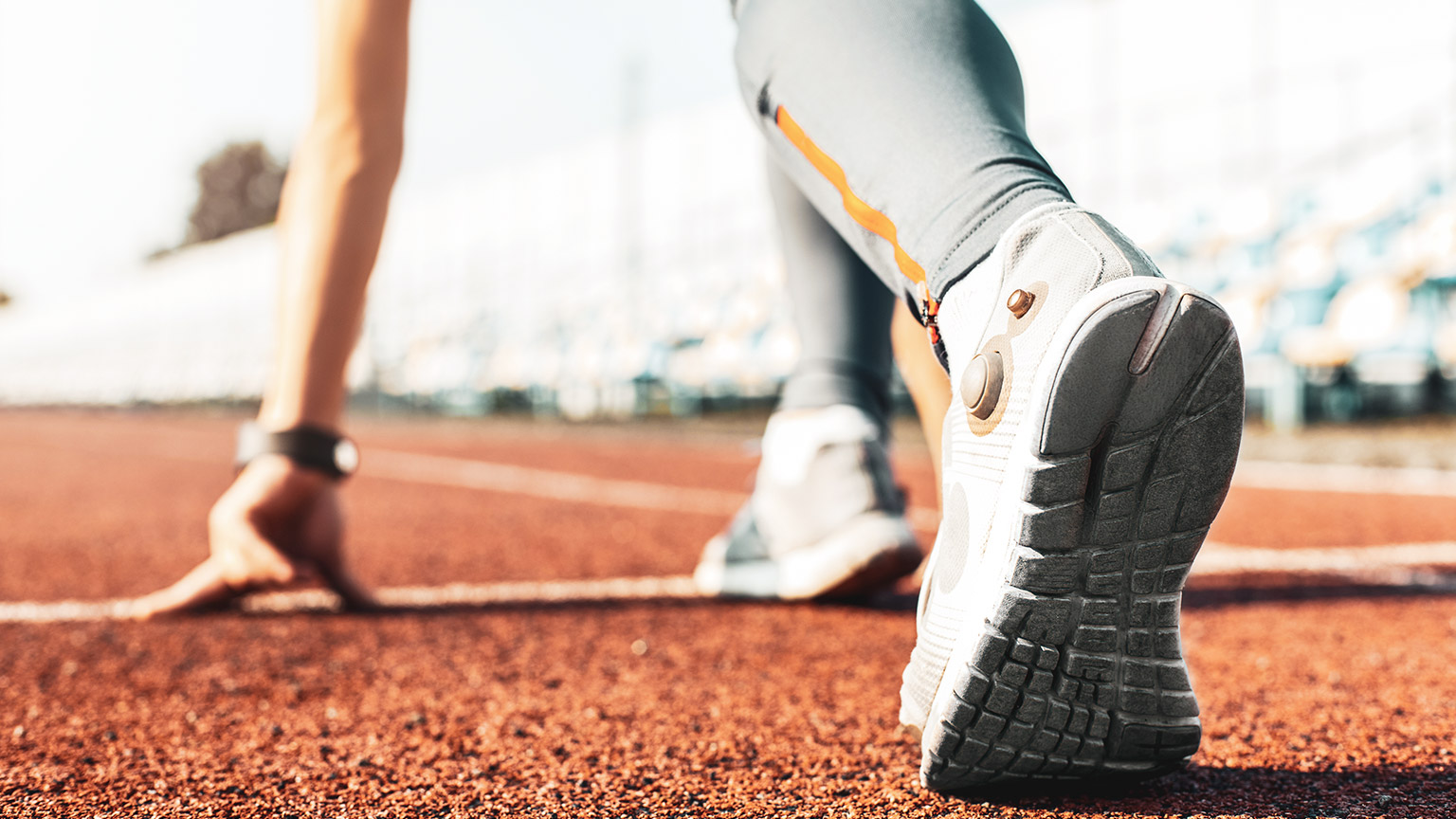Fitness components are ways of identifying a person's fitness. How fast is your client? How agile? How powerful?
Understanding components allows you to analyse your client's fitness, and accurately prescribe ideal sets, reps, and rests to meet fitness goals. For example, suppose a netball player wants to improve their speed and agility to intercept more often and regain possession. In that case, you'd look to develop their speed, agility, and quickness (reflexive reactions).

What does it mean to be physically "fit"?
Hopefully, as you've reflected on what "fitness" means to you, you will have realised there is a lot of nuance and complexity in how you answer this question. It is an impossible task to decide if a marathon runner is fitter than a shot-putter. Each athlete excels at different fitness components at opposite ends of the spectrum. One way you could answer this question is by looking at all the components that go together to define fitness.
Fitness is the ability to make enough energy to meet the demands being placed on the body. It is the body's ability to produce ATP, the fuel for muscle contraction, and is essential for survival. This is a key part of your learning.
Components of Fitness: Categories
The components of fitness can be split into 2 key areas; health-related components and skill/performance-related components.
Health-related components can be incorporated into everyday activities. They are lifetime activities, and components in this group help to reduce chronic disease and improve health. Skill-related components relate to physical performance and help with sports and motor skills.
Let’s start with general physical fitness for health and a baseline for most sports. Being physically fit is about balancing the different components. For general health and fitness at any age, we want to be competent in all these components.
- Cardiovascular endurance
- Muscular endurance
- Muscular strength
- Flexibility
- Body composition
We can also consider skill-related fitness components.
- Speed
- Power
- Agility
- Balance
- Coordination
- Reaction time
A good balance in all of these areas won’t just make you a valuable team member for your chosen sport, you will also reap the benefits of having a healthy heart and set of lungs, good muscle development and body composition, and be less likely to get injured from lack of mobility and flexibility.
If we could give every individual the right amount of nourishment and exercise, not too little and not too much, we would have found the safest way to health.Hippocrates
In this topic, you will learn about:
- Health-related fitness components
- Skill-related fitness components
- Anaerobic and aerobic components
We'll finish this topic by discussing what fitness components you think are most important for various sports.
Let's take a closer look at how health-related components are defined, and what benefits they offer.
Cardiovascular endurance

Cardiovascular endurance (also known as cardiorespiratory endurance or aerobic fitness) refers to your body's ability to efficiently and effectively intake oxygen and deliver it to your body's tissues by way of the heart, lungs, arteries, vessels, and veins.
By engaging in a regular cardiorespiratory exercise like cycling, hill walking, and running, you can:
- maintain or even improve the efficient delivery and uptake of oxygen to your body's systems.
- enhance cellular metabolism.
- ease the physical challenges of everyday life.
Muscular endurance
Muscular endurance is your muscle's ability to exert force (contract) repeatedly or for an extended period of time. It could be considered the pinnacle of fitness as it is combined muscular strength, cardio endurance, components of mobility/flexibility, and most people with high muscular endurance will have favourable body compositions, (i.e., healthy body fat levels and substantial muscle mass).
Answer the questions, and expand the accordions to see an example answer when ready.
- What is an example of a sport where the athletes have to perform feats of muscular endurance?
- What gym exercises can be performed with improved muscular endurance?
Long-distance cyclists
To continuously pedal a bike over a long distance, often up steep inclines, cyclists have to develop fatigue-resistant muscles in their legs and glutes. These are evidence of a high level of muscular endurance.
Planks
Holding a plank to develop core strength is another example of muscular endurance. The longer you can contract your abdominals and hold your body in a steady position, the greater endurance you have through your hips, abdominals, and shoulders.
Watch
The following video demonstrates a sit-up test, one way to test muscular endurance.
Muscular strength
While muscular endurance refers to how fatigue-resistant a particular muscle group is, muscular strength refers to the amount of force a particular muscle group can produce in one, all-out effort. A key measure of strength in the gym is a one-rep max.
Why do people train for strength?
- Weightlifting and powerlifting competitions
- Bodybuilding to maximise muscular development for aesthetic goals
- General strength training for fitness and health enhancement
- Physical therapy for rehab from injury or disease
- Sport-specific training for position-specific strength
- Fall-prevention
Factors such as neural activation, muscle fibre type and size, and limb length affect the capability of the muscle to produce force. To read more about these factors, expand the accordions.
Much of the power called up in muscles is due to how the nervous system controls how hard muscles pull. This is called neural activation and improvements are seen rapidly once training starts. Learning to lift weights is the same process as learning to ride a bike as a child.
Muscles are made up of 3 fibre types, slow-twitch and fast-twitch fibres (types a and b). Fast-twitch are well adapted to using anaerobic energy systems meaning they can pull very hard and produce more force. Someone with more fast-twitch fibres will generally be stronger than someone with more slow-twitch fibres.
Cross-section area size or muscle girth matters with muscles. The wider the muscle the more fibres are in line to pull hard.
Limbs or long bones act as levers and depending on their length, you get some biomechanical advantages for lifting heavy weights.
The following graph illustrates how neural activation, muscle fibre type and size, and limb length affect strength.
This graph demonstrates how initial rapid gains in strength are brought about mainly by improved neural activation. Muscle growth occurs much later, and strength improves further.
Take care!
Before embarking on a strength goal, we must establish a baseline for strength. In trained athletes with good movement patterns, this will likely be a 1 rep max test. For beginners, this is not really safe so we might look at a 3-rep max or 5-rep max.
However, there is a large learning component to strength training. Beginners will have to work through a process of neuromuscular improvement. This should be done at lighter weights. Trying to progress to strength lifting protocols too early could result in injury.

Flexibility
Flexibility refers to the range of motion you have around a given joint. It is your muscles' and joints' ability to move through their full range of motion (ROM). Like muscular strength and endurance, flexibility is joint-specific. E.g., you may have very flexible shoulders, but tight and inflexible hamstrings or hips.
The following image shows the range of movement (flexibility) in an elbow joint, ranging from 10 degrees or less (hyperextension) to 140 degrees.

Why should we stretch?
According to the American Council on Exercise, the benefits of stretching include:
- Increased Flexibility and ROM
- Improved Circulation
- Better posture
- Stress relief
- Enhanced Performance
Who is flexibility important for?
Flexibility is important at any age. It plays a role in unhindered movement and can affect your balance, coordination, and agility. Maintaining a full range of motion through your major joints can reduce the likelihood of injury and enhance athletic performance.
As you get older, the importance of flexibility becomes even clearer. Think of individuals who are elderly. Many may walk with a shuffle or have difficulty reaching their arms over their heads. This may affect their quality of life, making it more challenging to perform activities of daily living, such as reaching items on high shelves, picking up items off the floor, or simply moving effectively to catch their balance if they start to fall.

How can we train flexibility?
There are many simple ways to work flexibility into your daily routine. Some of the most common forms of flexibility exercises:
- Static stretching - Where you hold a stretch for 30 or more seconds at a time
- Workouts that take you through dynamic stretching such as Barre, Yoga, Tai Chi, and Pilates
- PNF stretching - The contract-relax stretch where you maintain a static stretch position and subsequently contract against a person or object and then relax to increase ROM
Types of stretching
Static stretching should be performed after working out. If you did a lower body workout, it’d be a good idea to spend 30 seconds on each leg for your hamstrings, quads, glutes, lower back, and calves. For the upper body try stretches that focus on lats, pecs, shoulders, biceps and triceps, and traps.
Dynamic stretching involves activities such as typical warm-ups like leg swings, hippy squats, and low Cossack squats as well as full sessions such as yoga. Check out Yoga with Adriene on Youtube for many yoga videos for beginners to advanced.
PNF stretching is proprioceptive neuromuscular facilitation, basically stretching in a way that allows your brain to work with your muscles to recognise the stretching process and relax further and deeper into the stretch.
Watch
In this video, you can see an example of a PNF stretch for the hamstring.
Body composition
Body composition is your body's ratio of lean muscle to stored fat. To see improvements in body composition, you need to know what your starting point is. Weighing yourself on a scale won't do the trick, as weight alone tells you nothing about the makeup of your internal tissues.
There are several ways that you can measure body composition including:
- Skin fold testing
- Bioelectrical impedance analysis (BIA)
- Hydrostatic testing - This is considered the gold standard and involves being weighed on dry land followed by being weighed underwater since fat weighs less than lean tissue
- DEXA (Dual-energy X-ray absorptiometry) scans
Improving body composition is a combination of diet and exercise. From an exercise perspective, a mix of cardio and resistance training appears to be the most effective. The cardio targets fat burning and resistance training builds muscle tissue which increases your basal metabolic rate (i.e. body burns more calories at rest).
